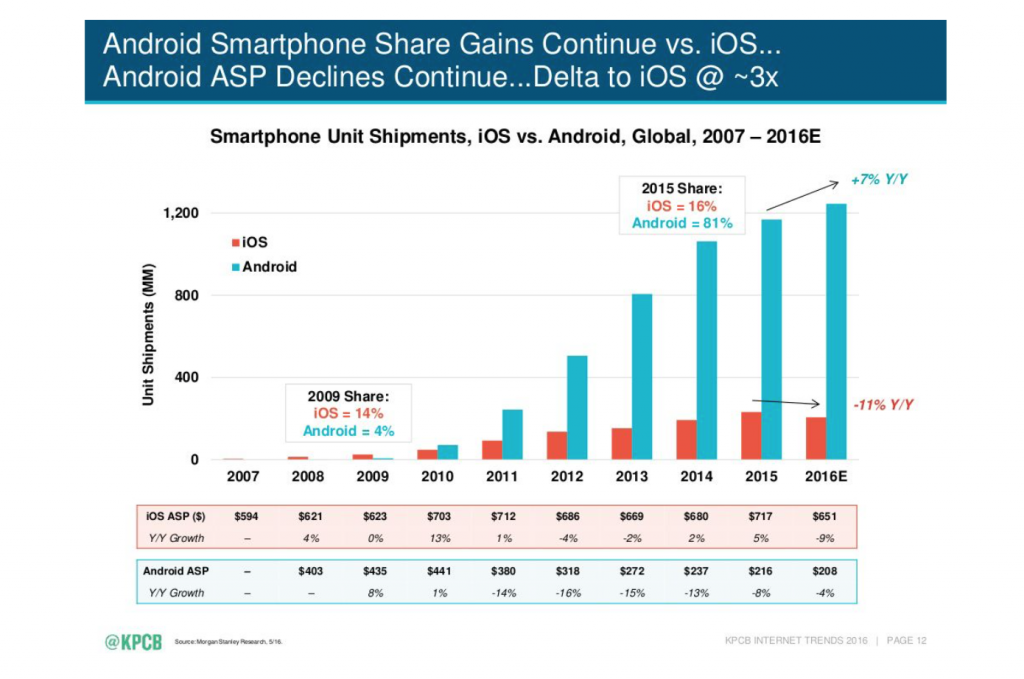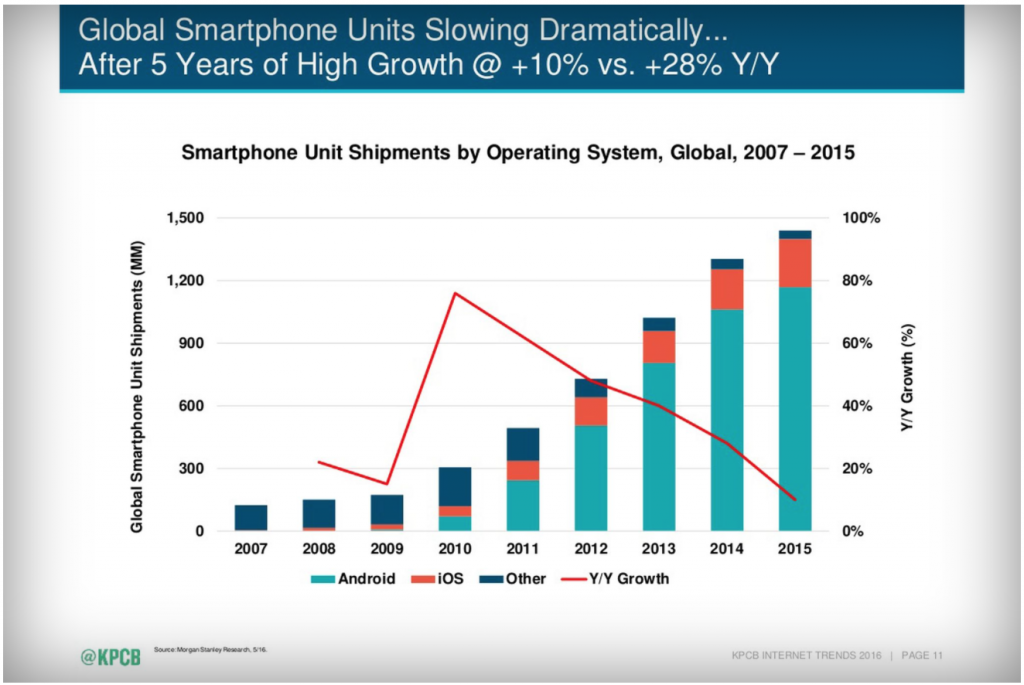When we think of the contemporary smartphone, two particular brands stand head and shoulders above the rest. The range of iPhone and Android smartphones have been each other’s main competitor for years, dominating the global smartphone and handheld device markets.
A recent study covered nearly ten years of sales figures between Android and iPhone, and managed to condense their findings into two graphs. The long-time battle between Android and iPhone has been condensed into two graphs by the 2016 Internet Trends Report.
So what can we take away from the study? We can see that prior to 2007 neither of the US smartphone giants had any real impact on the market, and only began to dominate sales around 2011. We also see that after 2010, there has been a sharp decline in the number of global smartphone shipments, meaning that certain markets have been cornered by certain manufacturers, and with no other major competitors on the horizon this looks unlikely to change.

But what do they tell us regarding the sales of Android and iPhone devices? Android clearly has a larger slice of the pie when it comes to individual sales given that an average Android device costs approximately a third of what you can expect to pay for the latest Apple product.
Since 2011 Android products have been dealing in price and growing in individual unit share, meaning that by 2015 Android had an 81% of global unit sales. On the other hand, iPhone are still not likely to drop the price of the more expensive product anytime soon.
The one thing missing from these charts is the fact that for years now Apple have had a much larger percentage of global profits based on the individual profit margins of individual devices, meaning that while they sell less units, they make much larger profit margins when compared to Android.
This information is useful because while we are inclined to think that sales should directly reflect the quality of the product, they are also determined by factors like brand loyalty and pricing.




